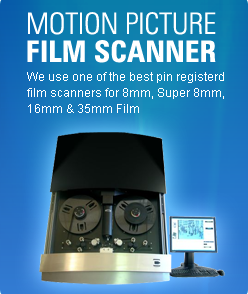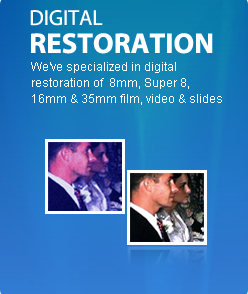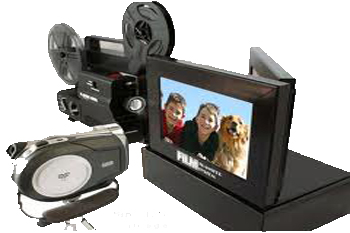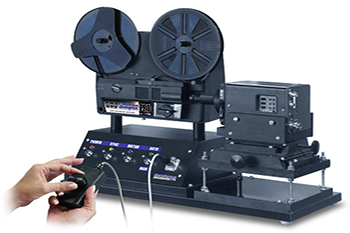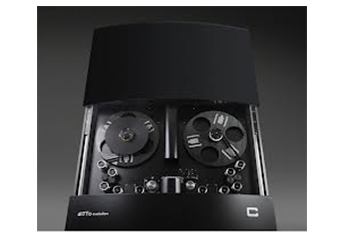
Film Conversion Equipment
Film Scanning and Film Transfer Equipment Types
The type of film scanning machine used for your 8mm, Super 8 or 16mm film conversion will have as much of an impact on the quality you receive as the resolution of the scan itself will. For example, if you wanted to digitize a photograph and tried doing it two different ways. You first put the photograph down on a table and took a picture of it using your smart phone or camera. Then you took the picture and scanned it using a flatbed scanner. If you compare the two side by side on your computer it will become really obvious that the flatbed scanner produced a digital image as good as the photograph. However, the picture you took with your phone or camera does not look close to the quality of the original photograph.
The same goes for scanning your 8mm, Super 8 or 16mm film. The real-time and frame by frame machines below are using a camcorder to take a picture of your film. The motion picture film scanner and Datacine machine are scanning the film. The results will be significantly different.
Film Conversion Equipment |
|
Real Time
|
|
Frame by Frame
|
|
Professional Film Scanners
|
|
Equally important as resolution is the type of film transfer. There are a few basic types of film transfer processes. More than 80% of the companies out there today use a real-time transfer. Any type of real-time film transfer will result in video that is 40-50% worse than the film’s current condition.
The film transfer processes above are the basics types and do not include any restoration by themselves. Restoration comes in many different capabilities from color and exposure correction, to grain elimination, to stabilization
Portsmouth Fun Facts: Founded as a town in 1752 by William Crawford, a wealthy merchant and ship owner, Portsmouth derived its name from the English naval port of the same name. In fact, many of the streets of the new town reflected its English heritage. The town suffered an epidemic of yellow fever in 1855 which killed 1 of every 3 citizens. Three years later it became an independent city, separating from Norfolk County.
Virginia Fun Facts: The home state of George Washington, Thomas Jefferson and other founding fathers, Virginia played an important role in the American Revolution (1775-83). During the Civil War (1861-65), the city of Richmond, Virginia, became the capital of the Confederacy, and more than half of the conflict’s battles were fought in the state. Today, many government institutions are headquartered in Virginia, particularly in Arlington, located across the Potomac River from Washington, D.C. In addition to eight presidents, famous Virginians include singer Ella Fitzgerald, tennis star Arthur Ashe, actress Shirley MacLaine and authors Willa Cather and Tom Wolfe.
